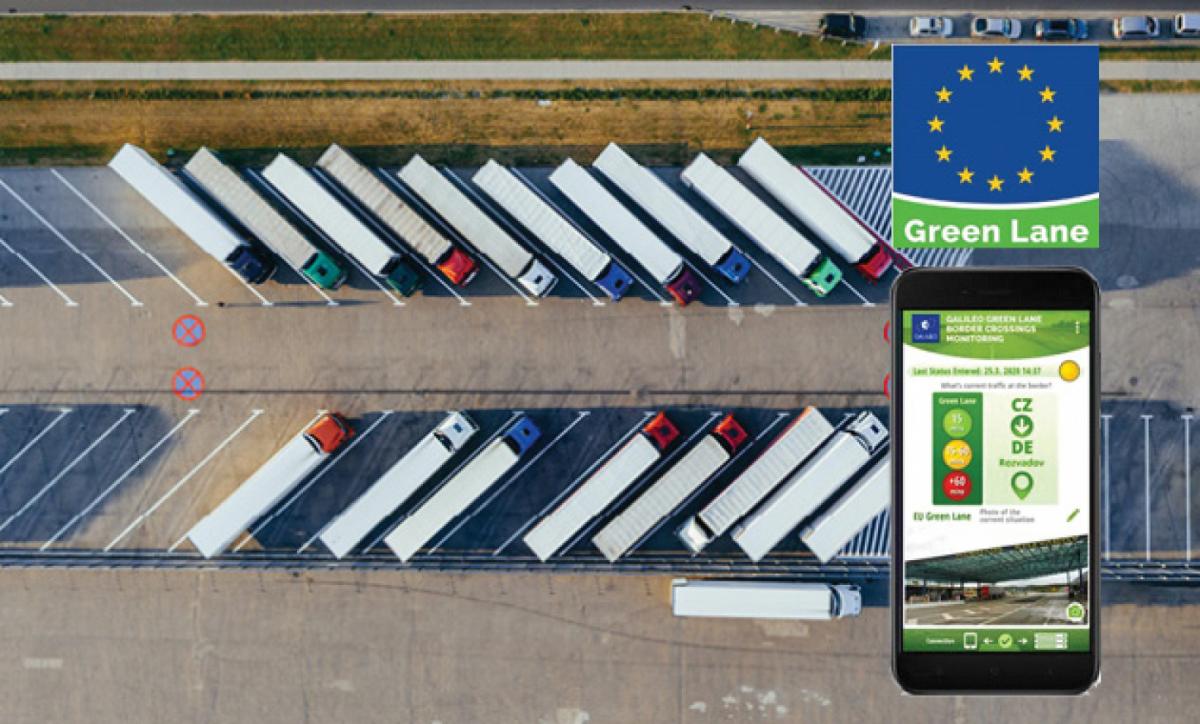The European GNSS Agency (GSA) is working together with the European Commission (EC) on an app to facilitate the movement of goods and freight within the EU in support of the COVID-19 pandemic response. The “Galileo Green Lane” app will ease the flow of freight through borders and enable the efficient transit of critical goods.

Galileo Green Lane will help reduce freight bottlenecks at EU borders
The COVID-19 outbreak represents a serious threat not only to public health, but also to the European economy. Lockdowns and other restrictive measures that are necessary to save lives also severely slow down the economy and may delay the transport of goods and services.
With a view to ensuring the uninterrupted transport of critical goods across the EU’s internal land borders, the GSA and the Commission are working on the “Galileo Green Lane” app – a solution to monitor and facilitate freight traffic and reduce waiting times at Green Lane border crossings.
“At the GSA, one of our key roles is to promote the use of Galileo and to address the economic and societal challenges that Europe faces. The European Commission´s Galileo Green Lane initiative fits this profile exactly,” said Pascal Claudel, Acting Executive Director at the GSA. “By supporting a solution that eases the transport of critical goods across borders, Galileo is making its contribution to help reduce the impact of the coronavirus pandemic on the EU’s economy and its citizens,” he said.
Real-time visualisation
The app will have two interfaces. The first is for border control authorities and provides a real-time visualisation of the overall border situation between a country and its neighbours. In turn, border officials can contribute information to the system by regularly feeding updates into the app on the traffic flow and waiting times at their borders. At the same time, the app will provide Member States with a website, generating reports automatically to demonstrate compliance to the EU on the Green Lanes implementation.
Read this: Calling for GNSS apps supporting the COVID-19 emergency response and recovery
The app will also feature a user interface providing drivers with a real-time visualisation of borders of interest to them, through an EU-wide map indicating Green Lane border crossing times. When drivers enter a geo-fenced area within a specified distance to a border, they can receive a notification produced by the border officers on the situation at that border.
Their location is collected anonymously only when they are approaching the border and it is solely used to update the overall border picture. Crowdsourced information from different sources is aggregated, including data from the leading European real-time visibility platform Sixfold.
Current status
Experts from the EC Joint Research Centre (JRC) are supporting the design of the geofencing algorithm, while the GSA is currently coordinating the project with operational units at the Commission’s Directorate-General for Defence Industry and Space (DG DEFIS) and with the Directorate-General for Mobility and Transport (DG MOVE) regarding needs linked to the Green Lanes. The app was also presented to the border authorities of the Member States at a meeting at the Directorate-General for Migration and Home Affairs (DG HOME) at which they were invited to contribute with user needs and to volunteer for the pilot.
The app is already in its final development stage and the GSA has started to reach out to EU Member States that wish to pilot the app and work together to define case scenarios and fine-tune the technical solution. Talks are currently underway with border authorities in France, Romania, Hungary, Italy and the Czech Republic.
The first pilot is starting next week in some selected border points and a simultaneous activity for drivers will be launched very soon with key transport companies from the International Road Union (IRU).
Media note: This feature can be republished without charge provided the European GNSS Agency (GSA) is acknowledged as the source at the top or the bottom of the story. You must request permission before you use any of the photographs on the site. If you republish, we would be grateful if you could link back to the GSA website (http://www.gsa.europa.eu).